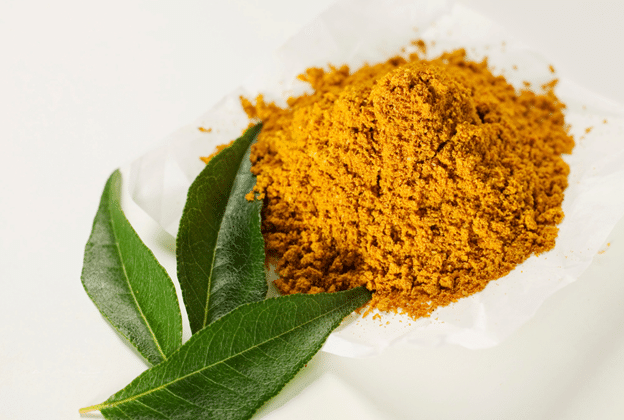Table of Contents
If you’ve ever tried two kratom strains back to back and had wildly different experiences, you’re not alone. Some make you feel alert and focused, others support calm and balance. And a few just seem to miss the mark altogether.
But there’s a real reason behind the variety. The differences between kratom strains go beyond color or marketing names—they reflect actual changes in alkaloid content, harvest methods, and even drying techniques. This guide explains why some strains feel more calming than others, how to tell which is which, and how to choose the right one for your personal routine.
What Makes One Kratom Strain Support More Calming?
The calming effects of certain kratom strains—like Red Bali kratom—are usually due to their unique balance of natural alkaloids. While kratom contains over 40 known alkaloids, two get the most attention:
- Mitragynine: More energizing in effect when dominant
- 7-hydroxymitragynine (7-OH): Usually responsible for more calming, relaxing properties
Strains with relatively higher 7-OH levels tend to be associated with soothing, evening-style routines, while high-mitragynine strains are often described as more motivating or clear-headed.
That’s not just theory. A botanical analysis published in Phytotherapy Research found that red-vein kratom varieties harvested later in the season consistently tested higher for 7-OH content compared to younger, greener leaves.
Vein Color Isn’t Everything—But It’s a Useful Clue
Kratom strains are generally classified into three main vein types:
- Red vein: Most associated with calm, recovery support, and tension relief
- Green vein: Considered balanced—mildly energizing support with some calming properties
- White vein: Typically described as more stimulating or mood-lifting
These colors reflect the stage of maturity and drying methods used after harvest:
- Red vein leaves are older and often sun-dried longer
- Green vein leaves are mid-aged, dried in partial light
- White vein leaves are young and dried in minimal sunlight
That doesn’t mean all red veins are calm and all white veins are energizing. But it’s a good starting framework when comparing new products.
Key Factors That Affect How a Strain Feels
Aside from vein color and alkaloid content, there are a few other variables that influence how a strain will feel:
1. Origin
Kratom grown in different regions of Southeast Asia may have different profiles due to soil, climate, and farming practices. For example:
- Borneo strains tend to be more calming
- Thai and Malaysian strains are often more stimulating
- Indonesian varieties offer a wide middle ground
2. Harvest Timing
Late-season kratom typically contains more oxidized alkaloids, which lean calming. Early harvests, especially of white and green veins, may feel more energizing due to fresher mitragynine content.
3. Fermentation or “Bentuangie” Processing
Some kratom is aged or fermented in airtight bags. This “Bentuangie” process leads to increased levels of 7-OH and other calming alkaloids, even in green or red leaves.
Choosing the Right Strain for Your Needs
How do you decide what’s best for your situation? Start by identifying your intent, then match it with a strain that aligns.
Here’s a basic guide:
- Calm, relaxation, evening wind-down: Try red vein varieties like Red Borneo, Red Bali, or Bentuangie
- Balanced support for everyday tension or focus: Try green vein strains like Green Maeng Da or Green Malay
- Uplifted, motivated mornings or social energy: Try white vein types like White Thai or White Sumatra
Sample Scenarios: How to Choose Smart
Let’s say you’re shopping for kratom and not sure what to get. Consider these examples:
Scenario 1: “I get tense after work and need a calm evening.”
Go for a Red Borneo or Bentuangie. These are known for being naturally calming, without being overly sedative.
Scenario 2: “I’m sensitive to caffeine but want a morning focus option.”
Try a Green Maeng Da. It’s smoother than white strains and won’t spike your energy levels too fast.
Scenario 3: “I want to stay productive during the day but not feel wired.”
A Green Malay offers a good blend of mild motivation and body balance.
What to Watch Out for When Picking Strains
While many brands offer reliable products, not all labeling is consistent. Here are red flags and tips:
- “Ultra red” or “extreme calming” claims might be marketing fluff unless backed by test results
- Look for vendors that include third-party lab tests showing actual alkaloid content
- Avoid strains with excessive additives or synthetic enhancement—natural isn’t always clean, but clean is always better
Still Unsure? Try a Variety Pack
Many reputable kratom sellers offer strain samplers so you can try red, green, and white types without buying large quantities. This is especially helpful if you’re still learning what your body responds to.
Keep a small journal of your experience with each strain, noting:
- Time of day
- How you felt 30–60 minutes later
- Any side effects or energy crashes
That simple habit will help you dial in your ideal match faster than trial and error alone.
Final Thoughts: Know Your Needs, Respect the Plant
The reason some strains feel calmer than others comes down to real, measurable differences in alkaloid content, processing, and plant maturity. The more you understand those variables, the more confidently you can build a routine that works for you.
Remember:
- Red veins lean calming
- Green veins strike balance
- White veins energize
- But origin, drying method, and alkaloid tests matter too
Once you stop chasing “the strongest” or “the fastest” and start picking strains based on your goals, kratom becomes a much more helpful and consistent part of your wellness strategy.


